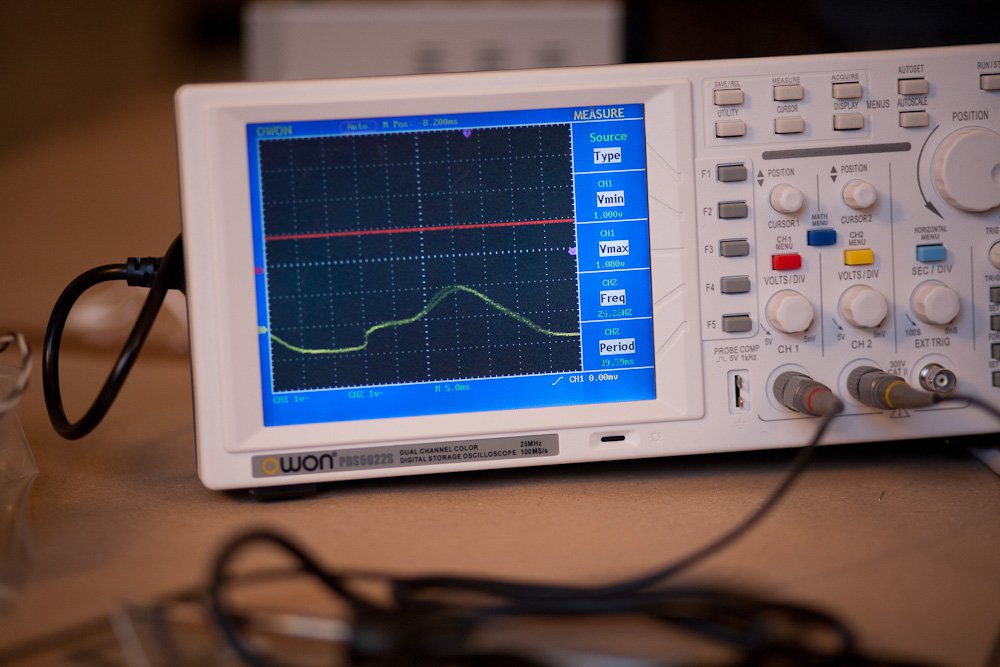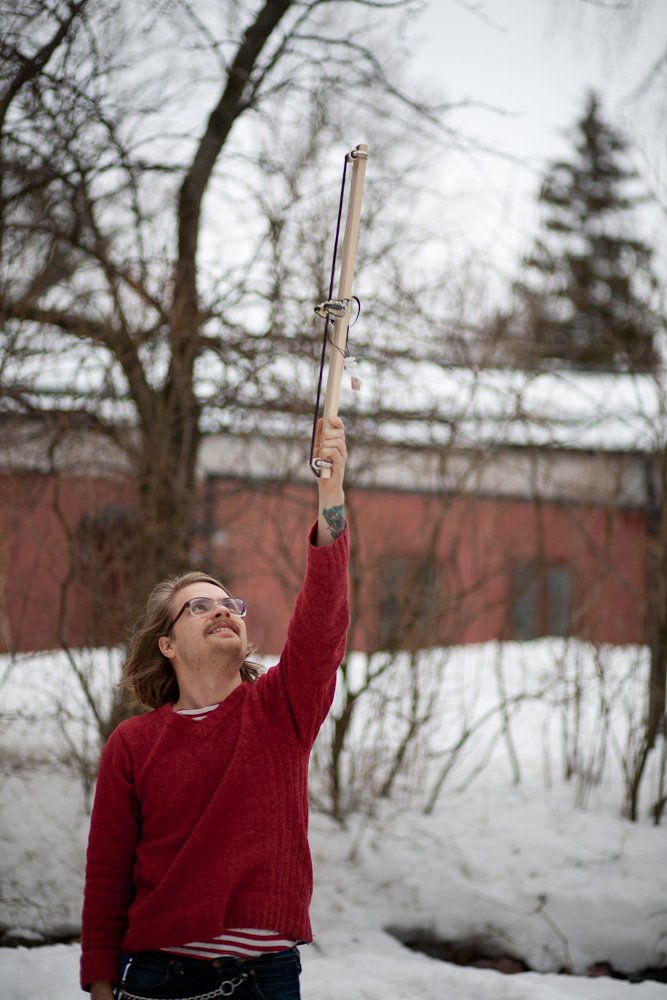What if environmental research would be based on sonic representations? In this post I will describe what I came up with at the Pixelache M.A.R.I.N. workshop on environmental sensing.
For the workshop at Pixelache, Tapio Mäkelä, founder of the M.A.R.I.N. association, brought one of the Windbelt developer’s kits. It is aimed at producing energy out of wind. From their website:
Instead of using conventional geared, rotating airfoils to pull energy from the wind, the Windbelt relies on an aerodynamic phenomenon known as aeroelastic flutter (flutter). While the phenomenon is a well-known destructive force (e.g., a cause of bridge failure), researchers at Humdinger have discovered that it can also be a useful and powerful mechanism for catching the wind at scales and costs beyond the reach of turbines.
Though this is a very interesting approach to produce energy (I definitely dig it), I was immediately drawn to the idea to use the d/c signal (caused by the vibration of the ribbon and its attached magnets between the electromagnets) as a (low-frequency) sound source.

The idea for this work is to look artistically on a hypothetical world where sound is the primary medium to convey information.
What if environmental research would be based on sonic representations?
This particularly includes to build/design custom sensors that inherently capture (audible) signals, rather then single values. The background for this is that I wondered the other day, how natural science would’ve developed if it would’ve been grounded on the use of sound and vibrations as the main modalites to convey information.
My feeling is that not only the assembly and design of the (auditory) displays would’ve been done differently, but also the very basic designs of the sensors itself: It does not make any sense to first turn a signal into some values (frequency, phase, amplitude, etc.), in order to turn it again into a signal for listening. Think e.g. of medical auscultations as roughly described in my [intlink id=”508″ type=”post”]post on storyboards[/intlink]. Physicians do not first make statistical calculations, they first hear what’s going on inside the body.
I think of this wind “sensor” as a rich sound source that possibly tells a lot about the wind in which its vibrations originate. In order to get more insights into the character of the sensor, I recorded its sound; one time when plugged by hand, one time when placed in the wind.
Note that the sound of a windcell in the wind is completely different from it being handplugged:
 No, this is not me. Thanx, Jari!
No, this is not me. Thanx, Jari!
Future steps will be to realize what I, for now, have done as a mockup study: Using a windcell’s sound as the source for an [intlink id=”8″ type=”page”]Auditory Augmentation[/intlink]-like system, where the sound is overlaid by audio filters, which are controlled by environmental data (temperature, humidity, dewpoint), captured at the senor’s placement. Visitors can walk around with headphones and plug into one or more of the sensors to hear their readings.